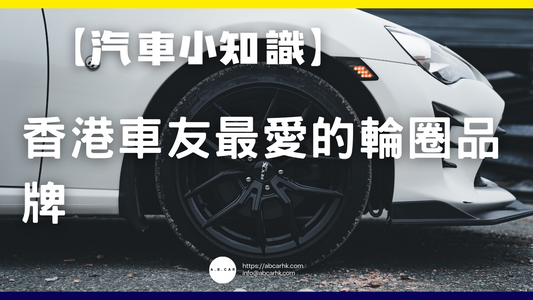[Home Tips] How to design a home for the elderly’s safety?

👵👴 Why is home safety particularly important for elderly people in Hong Kong?
Hong Kong's population is aging at an accelerated pace. According to statistics, the proportion of people aged 65 or above continues to rise, and most elderly people choose to continue living at home (rather than in nursing homes).
However, Hong Kong homes are generally small, have many storage areas, and have crowded circulation routes . In addition, the elderly may have:
- Decreased vision and hearing
- Impaired mobility and balance
- Chronic disease or osteoporosis
These factors greatly increase the risk of home accidents such as falls, collisions, burns, and getting lost📉 .
💡Editor 's opinion : Good home design for the elderly is not just about adding handrails, but taking into account "lifeline, lighting, anti-slip, and accessibility" from a comprehensive perspective.
⚠️ Common safety risks for elderly people in Hong Kong
| Hazard Category | example | Potential consequences |
|---|---|---|
| Fall risk | The ground is slippery, debris is blocking the road, and the corners of the carpet are curled | fractures, head injuries |
| Insufficient lighting | Dark corners and insufficient lighting for toilet use at night | Falls and injuries |
| Kitchen Hazards | High temperature oil smoke, fire source, knives | Burns and cuts |
| Bathroom Hazards | Slipping while bathing, hot water temperature is too high | fractures, burns |
| Inconvenient access | The threshold is high and the door is too heavy | Difficulty moving, falls |
| Inadequate emergency response | No emergency assistance equipment | Delayed rescue |
🛠️ Home Safety Design Principles for Elderly People (Hong Kong Edition)
1️⃣ Simplified movement lines and anti-fall design
- The floor is flat and non-slip : Use non-slip tiles or non-slip floors throughout the house and avoid small carpets (which are prone to sliding).
- Clear clutter : Keep walkways at least 80cm wide to facilitate the passage of walkers or wheelchairs.
- Lower the threshold : If it cannot be removed, add a ramp.
- Stable furniture : Avoid furniture with sharp corners and choose furniture with rounded corners.
2️⃣ Adequate and intelligent lighting
- Even lighting throughout the house : corridors, kitchens, and bathrooms are well lit to avoid shadows.
- Night light design : add a sensor light on the bedside → toilet route, which lights up automatically at night🌙.
- Switch position : Height is about 90-110cm, which is convenient for operation while sitting or standing.
- Smart lighting control : can be controlled by remote control or mobile phone to reduce movement risks.
3️⃣ Bathroom safety design
- Anti-slip tiles + good drainage : prevent slipping due to accumulated water.
- Grab bars : Horizontal and vertical grab bars are required next to the toilet and in the shower area.
- Shower chair : Elderly people with limited mobility can take a shower while sitting.
- Constant temperature water heater : water temperature is limited to 38-40℃ to prevent scalding.
- Shower curtain instead of glass door : reduces the risk of collision.
4️⃣ Kitchen safety design
- Table height : about 80-85cm, reducing the pressure of bending over.
- Easy-to-reach storage : frequently used items can be placed at waist to shoulder height.
- Induction cooker or electromagnetic cooker : safer than open flame and has automatic power off function.
- Anti-slip kitchen mat : reduce slips caused by oil and water.
5️⃣ Entrances and interior doors
- Wide door design : at least 80cm, convenient for walkers/wheelchairs.
- Lightweight door handle : Choose a lever-type door handle (easier to grip than a round one).
- Smart door lock : keyless door opening, convenient for the elderly with hand joint degeneration.
6️⃣ Emergency Response System
- Emergency call bell : Install waterproof call bells in the bathroom and by the bed.
- Wearable help-seeking devices : fall sensors, GPS positioning bracelets.
- Keep your phone within easy reach : Place a phone in every major space that is readily accessible.
📋 Editor's Private Home Renovation Case for Elderly People
The editor helped a 78-year-old man in Hong Kong Island renovate his home:
- Remove any area rugs and use non-slip flooring instead.
- Sensor night lights are installed in the corridor, illuminating the entire area from the bed to the toilet.
- The bathroom is equipped with handrails on both sides and a shower chair, and the water heater is set to 38℃.
- Replace the kitchen with an induction stove to avoid forgetting to turn off the fire.
- Install smart door lock + emergency call bell.
✨Results : Elderly people’s risk of nighttime falls decreased (from 2 falls per year → 0 falls per year), they are more confident in daily activities, and their families feel more at ease when they go out💗.
✅ Editor's purchase and design suggestions
- Anti-slip materials : Bathrooms and corridors should be prioritized for renovation
- Smart lighting : sensor night lights and remote control lamps are preferred
- Safe kitchen : induction stove + easy access storage
- Accessibility throughout the house : low thresholds, wide aisles, and easy-to-grip door handles
- Emergency assistance system : a must-have for bathrooms and bedsides



